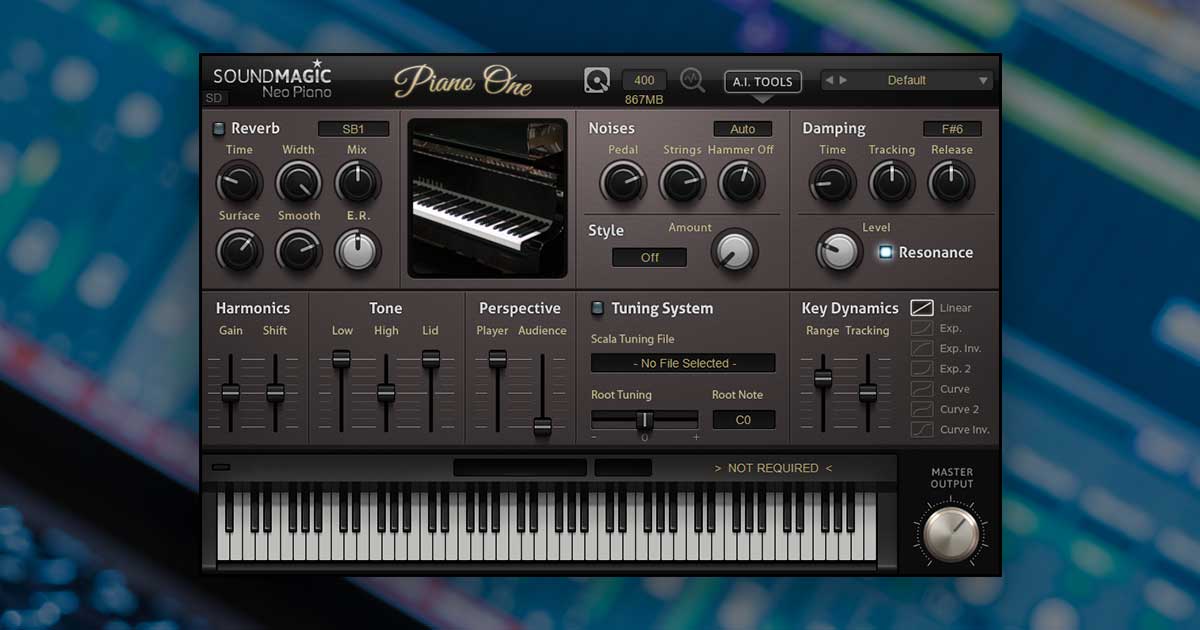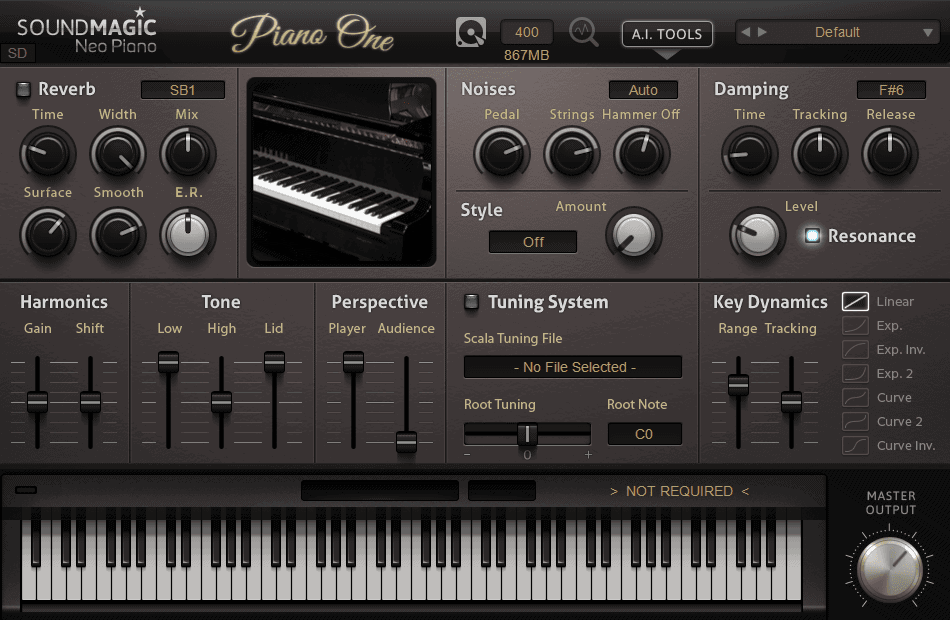
- #TUTORIAL ON TRUE PIANO VST INSTALL#
- #TUTORIAL ON TRUE PIANO VST SOFTWARE#
- #TUTORIAL ON TRUE PIANO VST FREE#
#TUTORIAL ON TRUE PIANO VST SOFTWARE#
As one of the most realistic and responsive VST's, it's no question that it is one of the best piano software plugins you can get. Standalone Through the Ivory Standalone Host. Go to Track - > Insert Virtual Instrument on New Track.ħ.) You will then see several installed VST virtual instruments. The Synthology Ivory II Grand Piano is: Based on the Steinway D9, Yamaha C7, and Bosendorfer 290. By default, it will be installed in Steinberg VST plug-in directory.ĥ.) Launch REAPER and then go to File – New Project.Ħ.) Let’s insert the mda Piano virtual instrument.
#TUTORIAL ON TRUE PIANO VST INSTALL#
Let’s have an example:ġ.) Supposing you will use mda Piano V.1.0 which can be downloaded here.Ģ.) Download the exe file to your desktop and install it (by double clicking). Do not forget to check the integrity of the installer and developer before using them.
#TUTORIAL ON TRUE PIANO VST FREE#
There are lots of free VST virtual instrument in the Internet particularly for piano. In the above example, since Moonlight Sonata by Beethoven is a piano sonata piece. To play a MIDI file, you need to add a virtual instrument appropriate for the music. MIDI - > Virtual Instrument - > Audio Installing Virtual Instrument It needs a virtual instrument that accepts the MIDI data as input that will render it as audio. Why? It is because MIDI is simply a data and is not a recording of a musical instrument.

You will notice that there is no sound coming out. If you see the MIDI file export options, just click OK.Ĥ.) Now position to the start of the file and hit the PLAY button. Go to Insert - > Media File then locate moonlight_sonata.mid. What it does contain are musical notes represented in digital form.Īs a simple illustration, try the following test:Ģ.) Download this sample midi file to your Desktop.ģ.) Let’s import the MIDI file. Unlike a real musical instrument recording done in analog domain (using an audio interface) that is then converted to digital file as WAV a MIDI file does not contain any information about the real sound of its instruments. mid) is nothing but digital data stored in your computer. Some Basics of MIDI Rendering and Importīy its very basic nature, a MIDI file (with file extension. 32- and 64-bit AAX, VST, and AU instrument as well as a low latency. At the end of this tutorial, you should learn the following:Ī.) Understanding the basics of MIDI rendering.ī.) Adding or installing a virtual instrument.Ĭ.) Composing MIDI music using built-in editor.ĭ.) Exporting the original MIDI track as WAV file or MP3.Į.) Importing existing MIDI, do some routing and isolation of MIDI tracks. A true bypass preset that represents what the piano sounded like from the raw. This tutorial is written for a complete beginner in MIDI music production. This makes it very easy for you to start creating music using your favorite virtual instrument or edit existing MIDI projects. Hover over ‘reverb’ and select Space Designer.REAPER supports MIDI and virtual instruments. Head down to the plugins menu and click on an empty space to open the menu. Make sure your piano track is selected then click on the dial icon in the top left of GarageBand’s screen to open smart controls. The Space Designer being my personal favourite. GarageBand has loads of great stock reverb options available. Repeat for all the automation points along your region.įinally you will probably want to add some character and depth to your piano sound by slapping some reverb onto it. You can always adjust to your liking afterward. Make sure you drag it all the way down to zero as this gives the most changes. Now, click on and drag the automation point on the left of your group of two all the way down to zero. Now you want to place automation points along the orange automation curve, one at the point where your main notes kick in and another on the very next point on the grid. If you click on that menu, you can select ’sustain’ from the next menu. An automation window will appear beneath the piano roll. Click the Automation icon in the top left of the window.

However you do it, switching up the velocity of your notes goes a long way towards humanizing your software instrument sound.Īnother great way to humanize the sound of GarageBand’s piano sounds is to use automation to simulate the pressing and releasing of a piano’s sustain pedal.ĭive back into your track’s piano roll.

Or you can change the velocity of groups of notes. You can go through and adjust the velocity of every individual note. To give these notes a more natural feel, jump in and manually adjust the velocity of the notes. This results in an unnatural, robotic feel when you play the notes back. If you’ve drawn in notes using the pencil tool in your software instrument track’s editor window, or recorded a melody using a controller that isn’t velocity sensitive, the velocity of your notes will all be the same. Velocity is the measure of how hard a key is pressed when you play or record a key on a piano. Depending on how you’ve recorded your software instrument performance, you may need to do a little work with the velocity of your notes to make them sound a bit more natural.


 0 kommentar(er)
0 kommentar(er)
